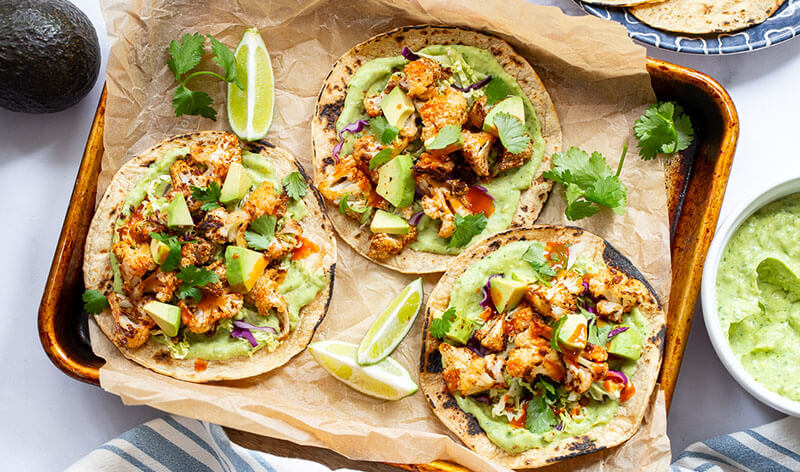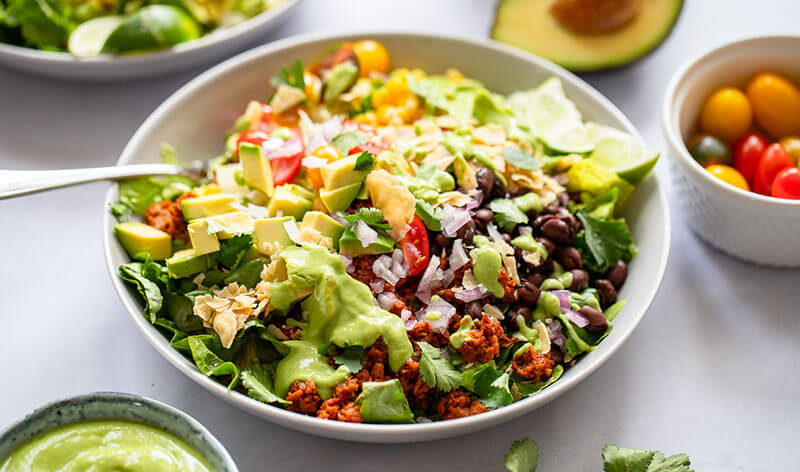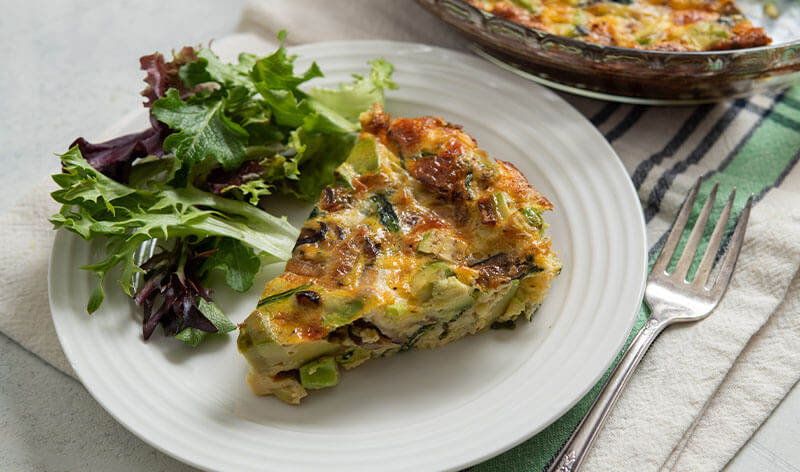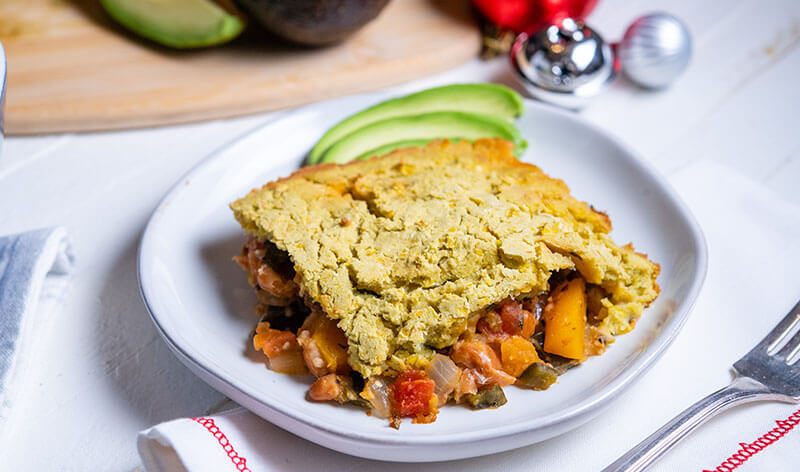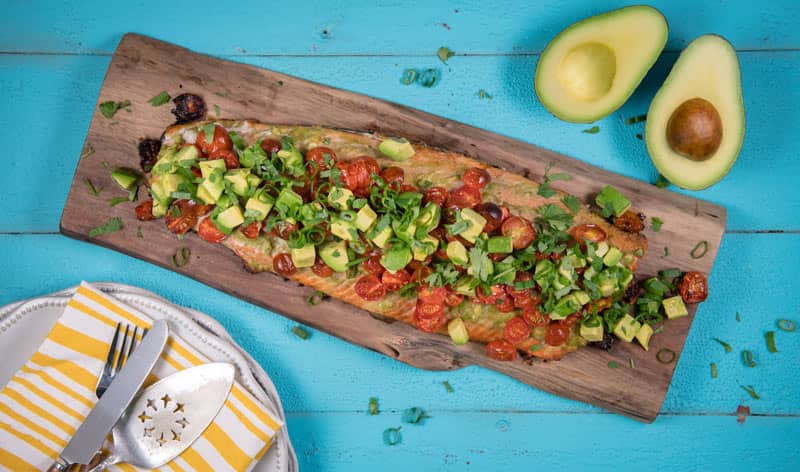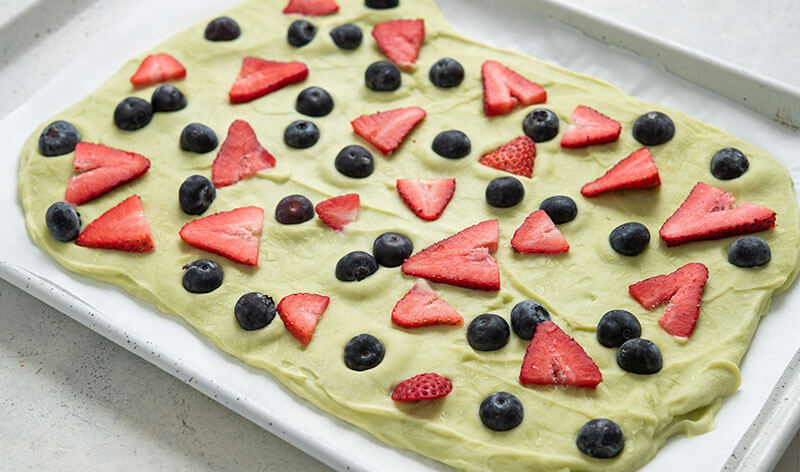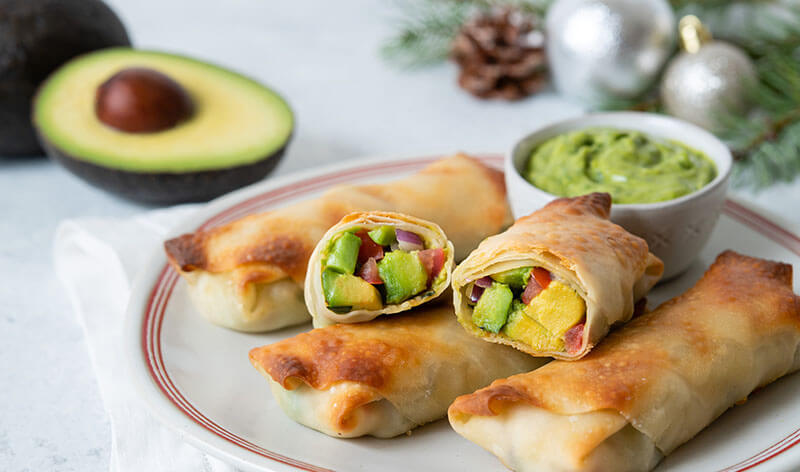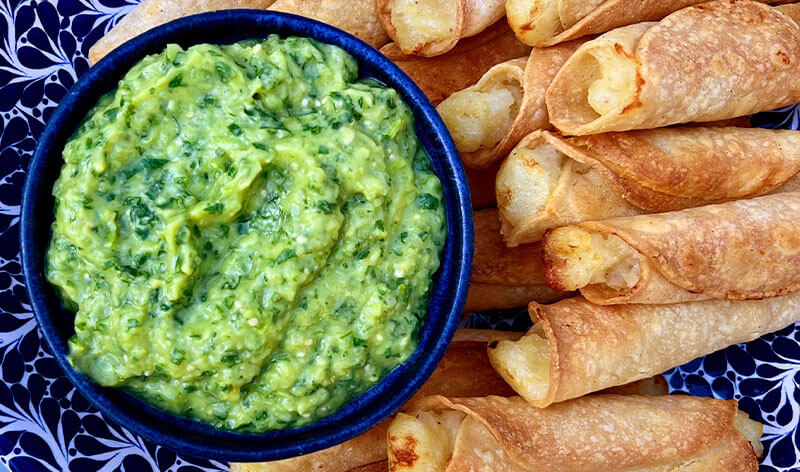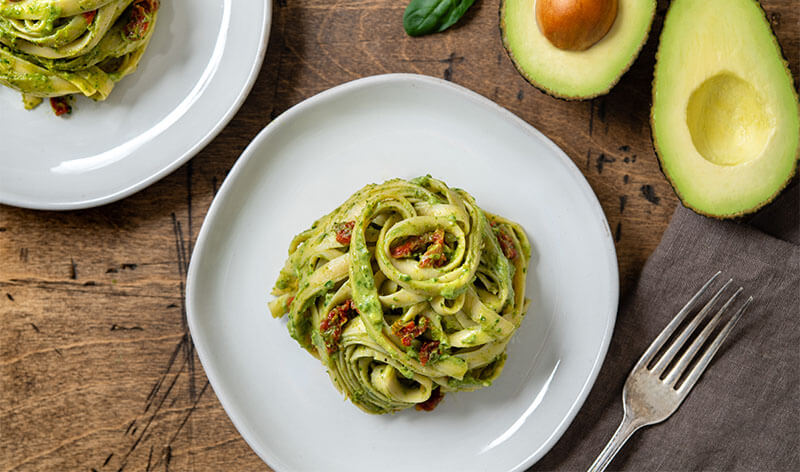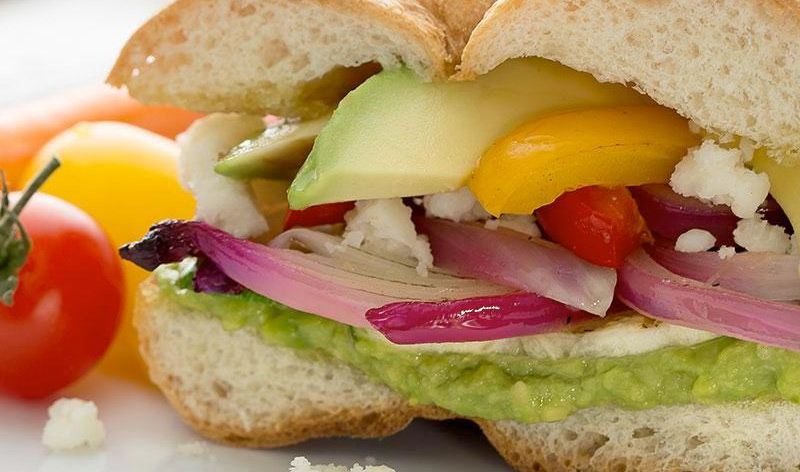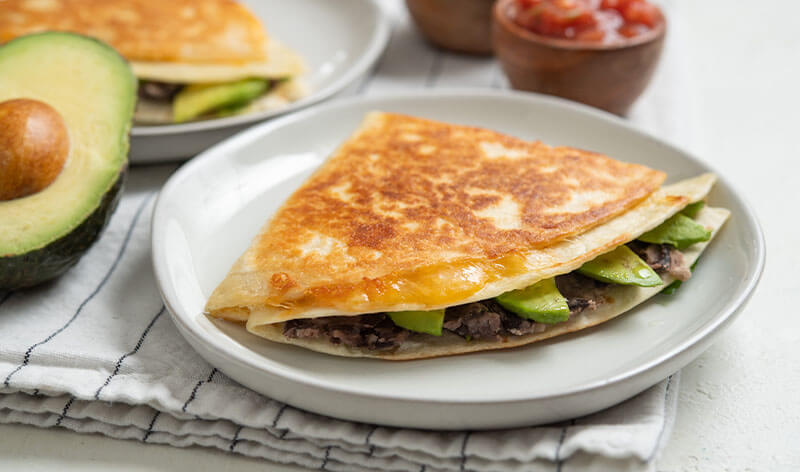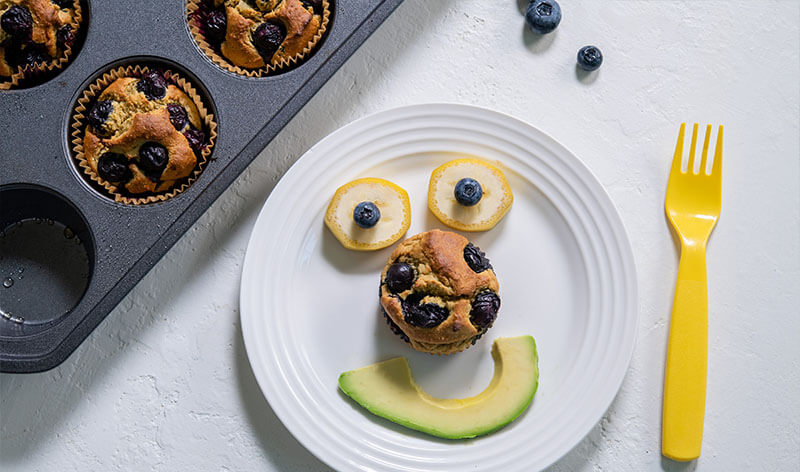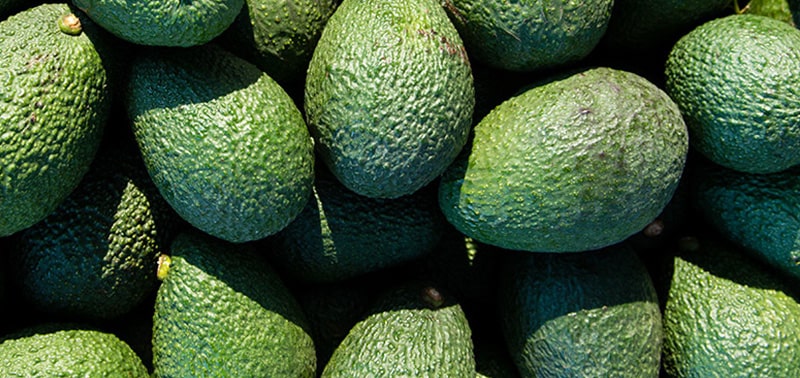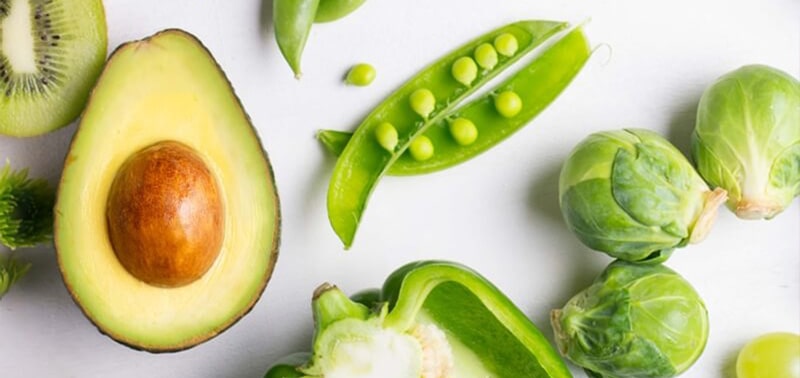Avocados are a versatile, nutritious fruit you can enjoy at any meal. Here’s how to prepare, eat, and store them:
How to Prepare an Avocado:
- Ripeness check: Dark green or black, ripe avocados will yield slightly when gently squeezed. Bright green avocados that are very firm or hard will ripen at room temperature within 4 to 5 days. Avoid avocados that are overly mushy as they may be overripe.
- Cutting: Slice lengthwise around the pit, twist to separate halves, safely remove the pit, then scoop, slice, or dice the flesh.
- Peeling (optional): Cut the avocado in quarters, then peel off the skin for smoother presentation in dishes.
Ways to Eat Avocado:
- Raw: Spread on toast, blend into smoothies, add to salads, make creamy dressings or sauces for your favorite proteins, or eat it plain with a spoon and seasoning.
- Cooked: Grill avocado halves to add a smoky flavor or replace ingredients high in saturated fats with mashed avocado at a 1:1 ratio in your baked goods.
- Recipes: Use in guacamole, creamy pastas, tacos, soups, burgers, and more.
Storage Tips:
- Prevent browning: To store half of an avocado, cover the exposed flesh as much as possible —leave the pit in, add a drizzle of lemon/lime juice, then refrigerate
- Refrigerate: Store uncut, whole, ripe avocados in the refrigerator to slow down the ripening process.
- Freeze: Start with a fresh, ripe avocado. Cut, peel, and dice it, and put the avocado cubes in a resealable freezer bag for up to a month. Add the frozen pieces to a blender with your other smoothie ingredients.
If the flesh is slightly brown but still smells fresh and isn’t slimy, you can cut away discolored areas and use the rest in smoothies, dressings, or baked goods.
Breakfast, Lunch, or Dinner:
Delicious and Simple Ways to Prepare and Eat Avocado
Avocados are one of the most versatile fruits in your kitchen. Their creamy texture and mild, nutty flavor make them a perfect addition to any meal, whether you’re starting your day with a hearty breakfast or winding down with a satisfying dinner.
You don’t need to be a professional chef to make great meals with avocado. Even basic additions like salt, pepper, or a squeeze of lemon can bring out its natural flavor. You can use it in smoothies, as a sandwich spread, or even in baked goods as a substitute for butter.
In this guide, you’ll find practical ways to enjoy avocado at any meal — and how to prep and store it without wasting a bite.
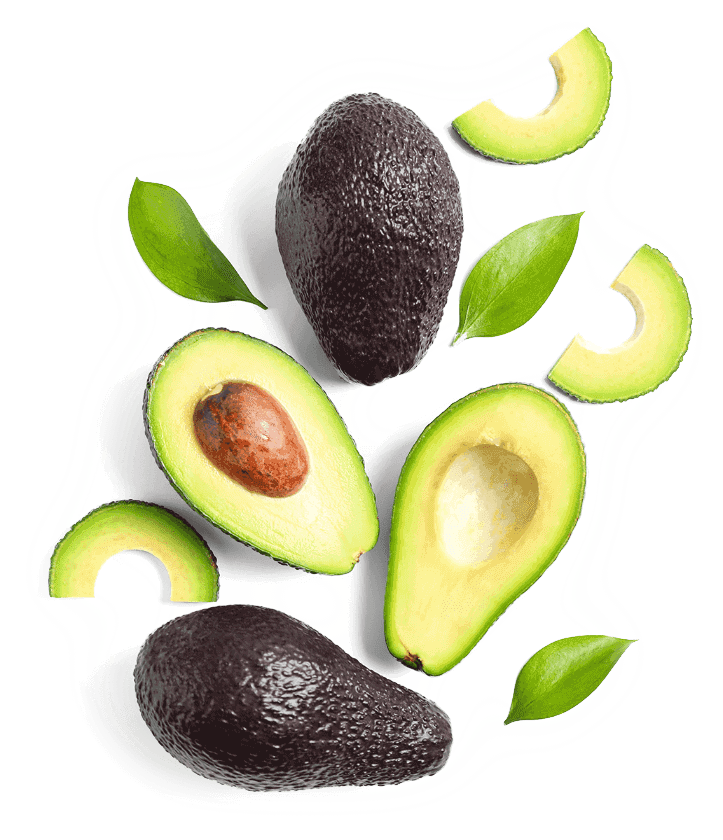
What is the Best Way to Eat an Avocado?
How you prepare an avocado can make all the difference, depending on what you’re making.
Mashing works best…
for recipes like guacamole, where the goal is a smooth, spreadable base. If you’re making avocado toast or need a spread for sandwiches, mashing allows you to mix in extras like lemon juice, garlic, or spices.
Slicing is a great option…
when you want the avocado to hold its shape. Thin slices can be layered neatly on toast, tucked into sandwiches, or placed on top of grain bowls, and tacos.
Dicing is the way to go for dishes with a little more texture.
Avocado cubes are the perfect topping for salads, rice bowls, or pasta dishes, offering bite-sized pieces that are easy to eat with a fork.
You can also randomly scoop out the flesh and toss it in the blender with your other smoothie ingredients.
Avocados will add a creamy texture and nutritious punch without altering the flavor too much.
If you’re short on time, simply halving the avocado and eating it straight from the peel, or with your favorite condiments, can be just as satisfying. Each method brings something different to the table, so choosing how to prep it depends on how you plan to use it.
How to Meal Prep an Avocado Without It Turning Brown
Just like bananas, apples, and other fruits, once avocados are cut, they tend to brown quickly. This is known as oxidation and begins as soon as the flesh comes in contact with oxygen. When you’re meal prepping your avocado, a little foresight can keep it fresh and green. One simple way to preserve the unused half of an avocado is to leave the pit in and brush the cut surface with a little lemon or lime juice before storing. The citrus helps protect the avocado’s color for a day or two.
For smoothie prep…
…cut the avocado into cubes and freeze them in a plastic bag. Once frozen, use them whenever you need.
Unlike whole, unpeeled and unsliced avocados, mashed avocados cannot be kept at room temperature.
They should be stored in the fridge. Before you refrigerate your mashed avocado, transfer it from the bowl to a clean plastic container. Press clear plastic wrap against the top of the mashed avocado to prevent browning. Then, cover it with a lid. To prevent wastage, it’s best to make the exact amount of mashed avocado your recipe calls for.
To prep and store guacamole, make sure you’ve added an acidic ingredient to prevent browning.
Place your guacamole in an air-tight container and press clear plastic wrap against the surface of the guacamole before covering to help prevent oxidation. Store in the fridge for no more than 12 hours. The guacamole will slightly brown while refrigerated, just discard the top oxidized layer and enjoy the rest.
Is Avocado Better Hot or Cold?

Avocados are often served cold, and for good reason — their naturally smooth texture works well in dishes like salads, sandwiches, and wraps. When chilled, they offer a refreshing, creamy contrast to crisp vegetables or crunchy toppings.

That said, warming the avocado brings out a different side of its flavor. When grilled, baked, or even lightly sautéed, avocado develops a softer, more buttery texture. Warm avocado can be a great addition to breakfast dishes like eggs or used as a topping for grilled meats and vegetables. You can even bake eggs directly into avocado halves for a quick oven-ready meal, or grill an avocado and use it as a base for chicken salad.
There are slight changes in texture and flavor between raw and cooked avocados, and some nutrients may be affected by heat, depending on cooking time and temperature. But in most cases, these differences are small enough that the choice comes down to what you prefer. Try adding avocado both ways to find the preparation that you like best.
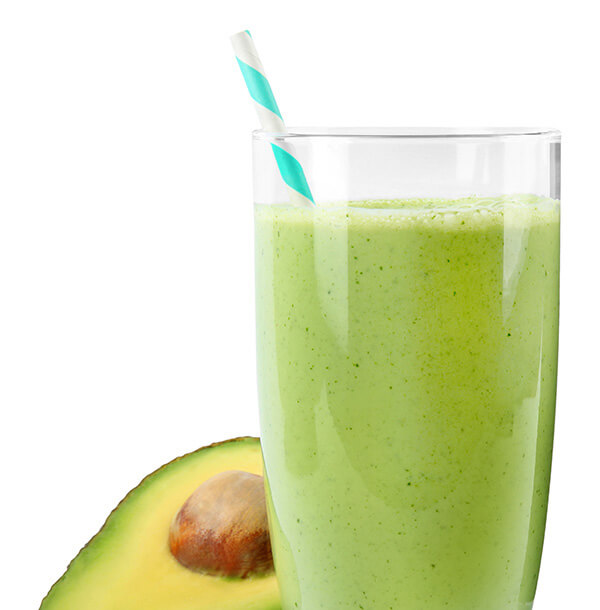
Can I Use Avocado In Smoothies?
Absolutely. Avocado blends easily into smoothies and gives them a thick, creamy consistency. Its mild taste pairs well with fruity and leafy green blends, making it a flexible base for all recipes. Add half an avocado to your usual mix of fruit, leafy greens, liquid, and extras like nut butter or protein powder, and blend until smooth.
If you’re freezing portions, cut the avocado into cubes and freeze them in an airtight plastic bag. Then you can throw a few of these cubes into any smoothie to add a creamy texture.









